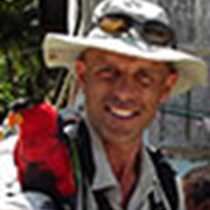Fortuna, Stromness and Grytviken; South Georgia
If there is one thing that has impressed us most strongly in our time in South Georgia, it is the sheer volume of wildlife here. From our first approach to the island where we found numerous whales to our landings where we have encountered beaches crowded by Antarctic fur seals and vast king penguin rookeries; it is clearly evident that life abounds in South Georgia.
These riches are not sustained by a highly productive terrestrial ecosystem. While South Georgia is greener than one might expect of a typical Antarctic island, the majority of what we have seen so far relies upon the ocean for sustenance. The waters around South Georgia are among the most productive in the world. When the Antarctic Circumpolar Current encounters the shallow waters around the island, upwellings of nutrient rich water are produced supporting plankton and fish communities. The current also brings masses of Antarctic krill to South Georgia. These shrimp-like creatures drift on the current from the Weddell Sea and Antarctic Peninsula to South Georgia. Krill is the mainstay of the diet of many of the animals we have seen, including the Antarctic fur seal.
Hunted to near extinction in 1800s, the fur seals have recovered spectacularly in recent years and now crowd the beaches around the island. At this time of year we are seeing many of the playful pups, born about three months ago, waiting on the beaches for another meal from their mothers who are out at sea feeding on the riches of the waters around South Georgia.
If there is one thing that has impressed us most strongly in our time in South Georgia, it is the sheer volume of wildlife here. From our first approach to the island where we found numerous whales to our landings where we have encountered beaches crowded by Antarctic fur seals and vast king penguin rookeries; it is clearly evident that life abounds in South Georgia.
These riches are not sustained by a highly productive terrestrial ecosystem. While South Georgia is greener than one might expect of a typical Antarctic island, the majority of what we have seen so far relies upon the ocean for sustenance. The waters around South Georgia are among the most productive in the world. When the Antarctic Circumpolar Current encounters the shallow waters around the island, upwellings of nutrient rich water are produced supporting plankton and fish communities. The current also brings masses of Antarctic krill to South Georgia. These shrimp-like creatures drift on the current from the Weddell Sea and Antarctic Peninsula to South Georgia. Krill is the mainstay of the diet of many of the animals we have seen, including the Antarctic fur seal.
Hunted to near extinction in 1800s, the fur seals have recovered spectacularly in recent years and now crowd the beaches around the island. At this time of year we are seeing many of the playful pups, born about three months ago, waiting on the beaches for another meal from their mothers who are out at sea feeding on the riches of the waters around South Georgia.




